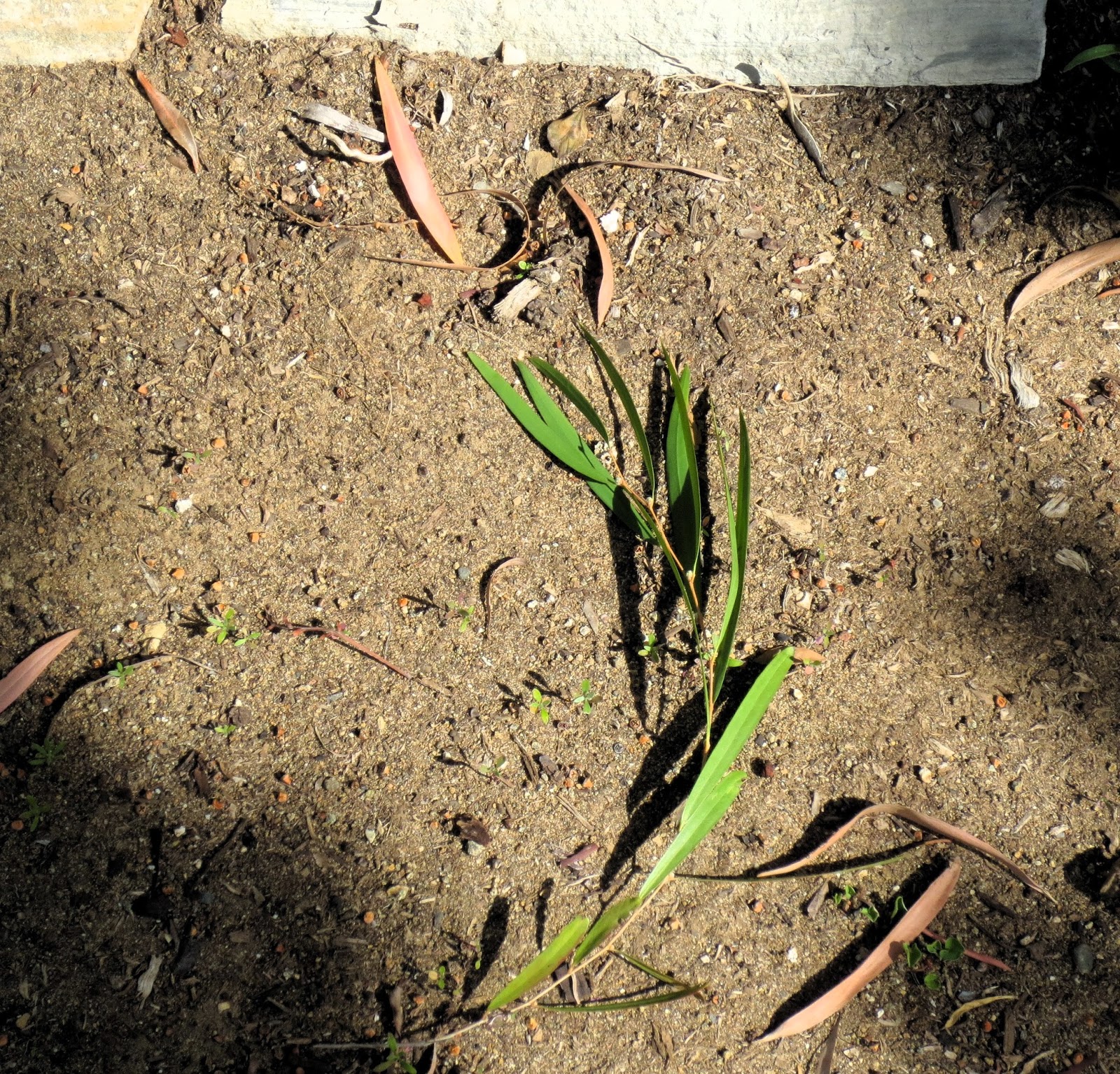I saw 2 scouting about last week but didn't think too much about it. Then, this morning, I began coming across tree debris.
 |
| First this |
 |
| ...and then this |
Then I heard them - their cries are unmistakable. I wasn't quick enough with my camera to catch both members of the pair sitting in a tree on my neighbor's property but I caught a photo of one before it flew off to join its mate.
I have no doubt they'll be back as the debris I collected this morning is a small fraction of what I picked up last year.
 |
| Debris collected this morning along one pathway |
According to an on-line resource affiliated with Cornell University, breeding pairs take one to 2 weeks to build their nests, which are constructed from scratch each year. Nests have 3 layers: a base constructed of sticks, a filling made of mud and grass, and a thick bowl of "something soft," which I assume is where the pepper tree branchlets come into play.
This year, so far anyway, they seem to prefer the 2 trees that were trimmed in late January, even though the other 5 trees have a lot more foliage to pick from. My husband speculated that the open branching of these trees allow them to swoop in, pick what they want and fly off more easily than the trees with denser foliage. That makes sense to me, especially as I recall that their favorite tree last year was the one with the lightest foliage.
 |
| The crows prefer these 2 trees |
 |
| ...to this untrimmed tree |
The internet is full of interesting information on crows, deemed by many sources to he highly intelligent creatures. Click here for an article on 6 "terrifying" ways crows have demonstrated how smart they are. Among other things, their abilities include facial recognition, conspiracy, planning and trickery. Hitchcock's film, "The Birds" no longer seems like a fantasy to me. I think I have to seek peaceful coexistence. The good news is that the presence of the crows hasn't seemed to bother the smaller birds in my garden - the crows seem to be more interested in nesting material than prey. While they are predators, according to the Cornell source, their main food sources are grains, earthworms and other invertebrates.
 |
| A trio of small birds enjoying an undisturbed bath in the fountain |
Have you had any interesting experiences with crows in your garden?


Nothing like this! But then I don't have any mature trees for them to pick at. How fascinating :)
ReplyDeleteThey REALLY like the California pepper trees! I wonder if the crows visiting this year and the same ones that picked at the pepper trees last year...
DeleteI don't think crows would be very welcome here. I remember once seeing two crows murder another crow. here was a terrible noise going on in the trees and it resulted in a dead bird. I have no idea what was wrong with the dead bird. Maybe it was a common thing and that is why the common name for crows is a murder. Squirrels do a lot of tree trimming for us in the spring. I suppose as long as it doesn't harm the tree it is OK. Quite a difference between the two larger trees and the smaller on. Is it an age difference do you think? I love your bird bath.
ReplyDeleteI can't say they're actually "welcome" here either but, according to the Cornell source, they're almost impossible to get rid of if they choose to roost on your property (short of cutting down trees) so I guess I'm lucky that they're restricting their visits to pilfering nest material.
DeleteGlad to hear that the crows are leaving the little birds alone for now. Two more weeks of litter picking then you'll have your peace with them :)
ReplyDeleteYes, I hope it's just the one pair that feather their nest with branch stems from our pepper trees - I'd hate to see what would happen if other pairs chose to do their "shopping" here as well. It's a good thing they're territorial!
DeleteWhat untidy creatures they are. I have often wondered why the name for a group of crows is a murder of crows. Well perhaps Rock Rose has the answer. I always thought that if you have a group of crows , they are rooks but just one and it is a crow because they are not so sociable.
ReplyDeleteI would rather have a murmuration of starlings in the garden than a messy murder of crows.
The Cornell resource claims that American crows do form communities to sleep (called "roosts") but breeding pairs separate from the community when it comes time to reproduce. I saw one of these roosts about a mile away in a residential area - I would NOT want to live with that in my backyard so I'm glad their visits to my yard have a limited purpose. According to the Cornell expert, it's nearly impossible to get rid of a "roost" once its established except by cutting down their favored sleeping spot.
Delete